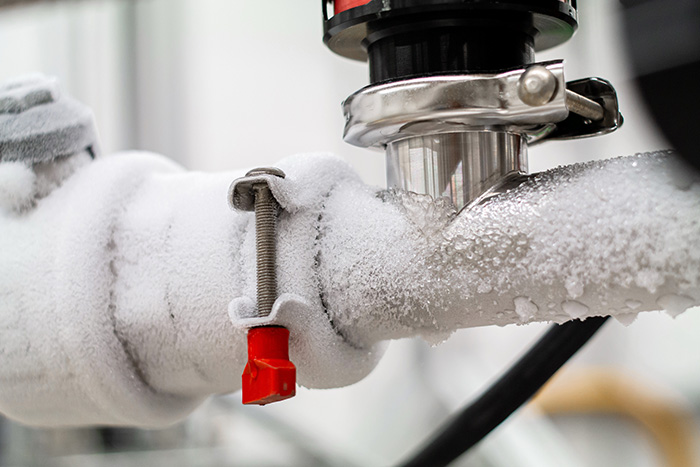What're your thoughts about Winter Plumbing Precautions: Preventing Frozen Pipes?

Cold weather can ruin your plumbing, especially by freezing pipelines. Here's exactly how to stop it from happening and what to do if it does.
Introduction
As temperatures decrease, the threat of icy pipes increases, possibly leading to pricey repair services and water damages. Understanding exactly how to prevent icy pipelines is crucial for property owners in cool climates.
Understanding Icy Pipelines
What triggers pipelines to freeze?
Pipelines ice up when revealed to temperatures listed below 32 ° F (0 ° C) for expanded durations. As water inside the pipelines ices up, it broadens, putting pressure on the pipeline walls and possibly causing them to break.
Threats and damages
Icy pipelines can lead to water system disruptions, residential property damages, and pricey repair services. Burst pipes can flood homes and cause considerable structural damage.
Indicators of Frozen Pipeline
Recognizing icy pipelines early can prevent them from bursting.
Exactly how to determine icy pipelines
Seek decreased water flow from faucets, unusual odors or sounds from pipelines, and visible frost on exposed pipelines.
Prevention Tips
Shielding susceptible pipes
Wrap pipelines in insulation sleeves or use warmth tape to protect them from freezing temperatures. Concentrate on pipes in unheated or external locations of the home.
Home heating techniques
Keep indoor areas appropriately warmed, particularly locations with plumbing. Open closet doors to allow cozy air to circulate around pipelines under sinks.
Safeguarding Exterior Plumbing
Yard hose pipes and exterior faucets
Detach and drain pipes garden tubes before winter months. Install frost-proof spigots or cover exterior taps with insulated caps.
What to Do If Your Pipelines Freeze
Immediate activities to take
If you think icy pipelines, keep faucets open up to ease stress as the ice thaws. Utilize a hairdryer or towels soaked in warm water to thaw pipelines gradually.
Long-Term Solutions
Architectural adjustments
Think about rerouting pipelines far from outside walls or unheated areas. Include additional insulation to attic rooms, cellars, and crawl spaces.
Upgrading insulation
Purchase top notch insulation for pipes, attics, and walls. Correct insulation assists maintain constant temperatures and decreases the threat of icy pipelines.
Final thought
Stopping frozen pipes requires proactive measures and fast responses. By recognizing the reasons, indications, and preventive measures, house owners can shield their pipes during cold weather.
6 Proven Ways to Prevent Frozen Pipes and Protect Your Home
Disconnect and Drain Garden Hoses
Before winter arrives, start by disconnecting your garden hoses and draining any remaining water. Close the shut-off valves that supply outdoor hose bibs and leave the outdoor faucet open to allow any residual water to drain. For extra protection, consider using faucet covers throughout the colder months. It’s also important to drain water from any sprinkler supply lines following the manufacturer’s directions.
Insulate Exposed Pipes
Insulating your pipes is an effective way to prevent freezing. Pipe insulation is readily available at home improvement stores and is relatively inexpensive. Pay close attention to pipes in unheated areas such as the attic, basement, crawl spaces, or garage. Apply foam insulation generously to create a buffer against the cold. You can also wrap your pipes in heat tape or thermostat-controlled heat cables for added warmth.
Seal Air Leaks
Inspect your home for any cracks or openings that could let in cold air. Seal any holes around the piping in interior or exterior walls, as well as the sill plates where your home rests on its foundation. Additionally, make sure to keep your garage door closed unless you’re entering or exiting. Leaving it open creates a significant air leak that can lead to frozen pipes.
Allow Warm Air Circulation
During cold snaps, it’s essential to allow warm air to circulate evenly throughout your home. Leave interior doors ajar to promote better airflow. Open kitchen and bathroom cabinets to help distribute heat consistently around the rooms. If you have small children or pets, be sure to remove any household chemicals or potentially harmful cleaners from open cabinets for safety.
Let Faucets Drip
A small trickle of water can make a big difference in preventing ice formation inside your pipes. When temperatures drop significantly, start a drip of water from all faucets served by exposed pipes. This continuous flow helps prevent the water from freezing. Additionally, running a few faucets slightly can relieve pressure inside the pipes, reducing the chances of a rupture if the water inside does freeze.
https://choateshvac.com/6-proven-ways-to-prevent-frozen-pipes-and-protect-your-home/

I'm just very occupied with Helpful Tips to Prevent Frozen Pipes this Winter and I really hope you enjoyed my post. For those who appreciated our post plz do not forget to pass it around. I praise you for your time. Please check up our site back soon.
Get Started
Comments on “Protecting Against Frozen Pipes in Winter: Key Strategies”